Pure creation is a rarity in fashion these days. The idea of budget-friendly co-ed shows and see-now-buy-now collections doesn’t exactly scream avant-garde, and yet this London Fashion Week has been characterized by a new, exciting movement of youth taking over the city. They made a fashionably late appearance at the Burberry-hosted LOVE party at Annabel’s on Monday night: Charles Jeffrey and his gang of club kids in wigs and faces painted to perfection. In the bar, Matty Bovan was wearing pink eye shadow and a dress, talking to fellow emerging designer A.V. Robertson, clad in a breastplate of very 3-D embellishment protected by a see-through top. Upstairs, John Galliano’s current Snapchat muse Paulina lit up like a unicorn in the crowd of smokers, every inch of her — hair, makeup, outfit — saturated to rainbow highs. If a cold cloud of commerciality is drifting fast towards fashion, the new generation isn’t dressing for the forecast — and on the biggest day of shows in London, neither was the establishment.
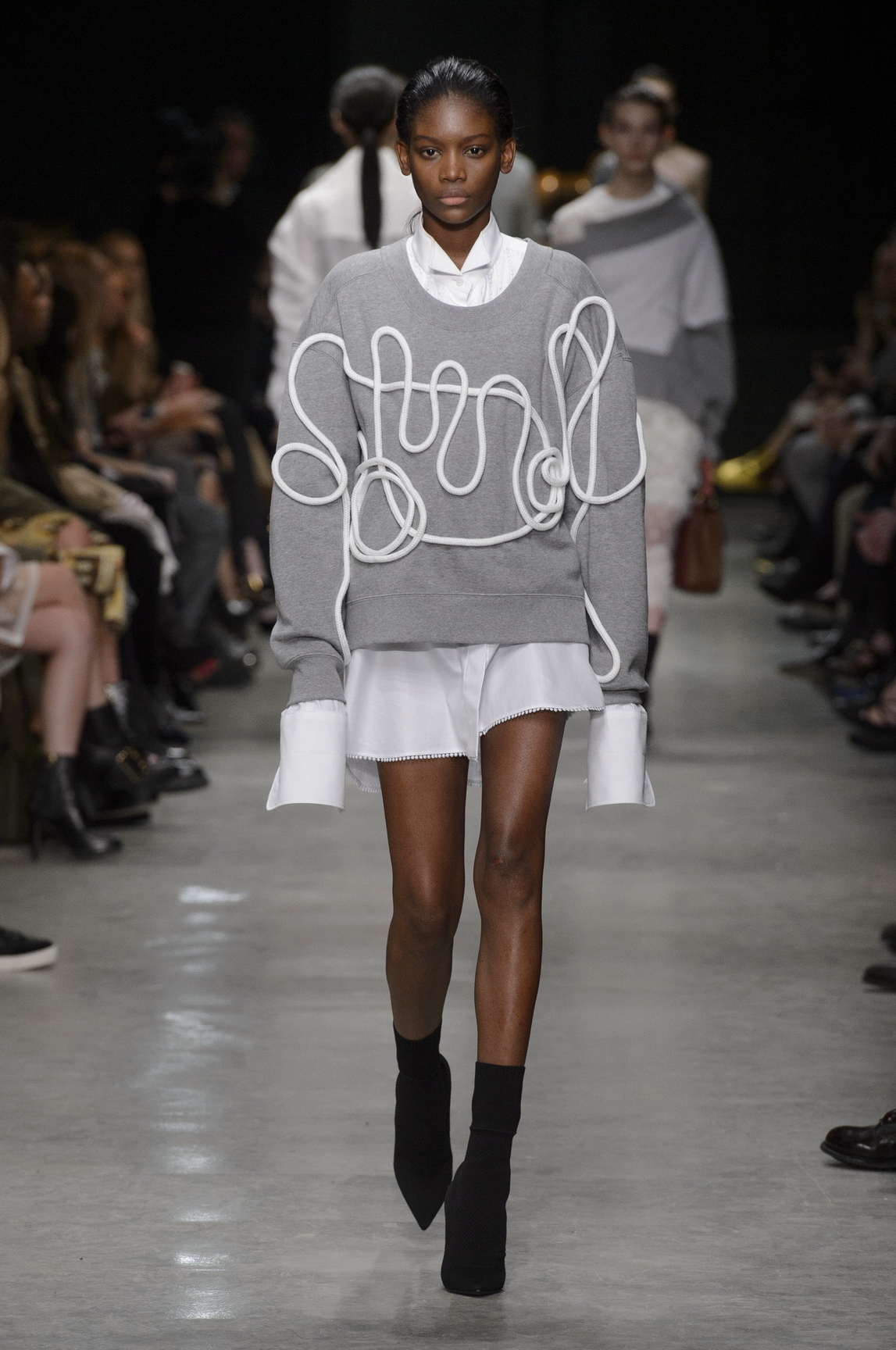
With its innovative ways, Burberry has become the poster brand for the commercial evolution. It was the first to merge men’s and women’s shows and debut a straight-to-consumer format last season, but there was nothing cynical or commercial about that show. On the contrary, the collection last September marked a new beginning for Christopher Bailey, who will step down as CEO of the house this July to focus solely on his creative director duties. More than anyone in this industry, Bailey represents the sum of the contrasting waves rising in fashion right now: while the corporate machine is running on high octane, designers are rediscovering that sense of pure creation that’s pretty much been reserved for Comme des Garçons shows and John Galliano’s Maison Margiela in recent years. Bailey couldn’t have made that statement clearer on Monday night when he presented his second straight-to-consumer show for Burberry at Makers House.
Read: Why see-now, buy-now is ushering in a new, brilliant era for fashion.
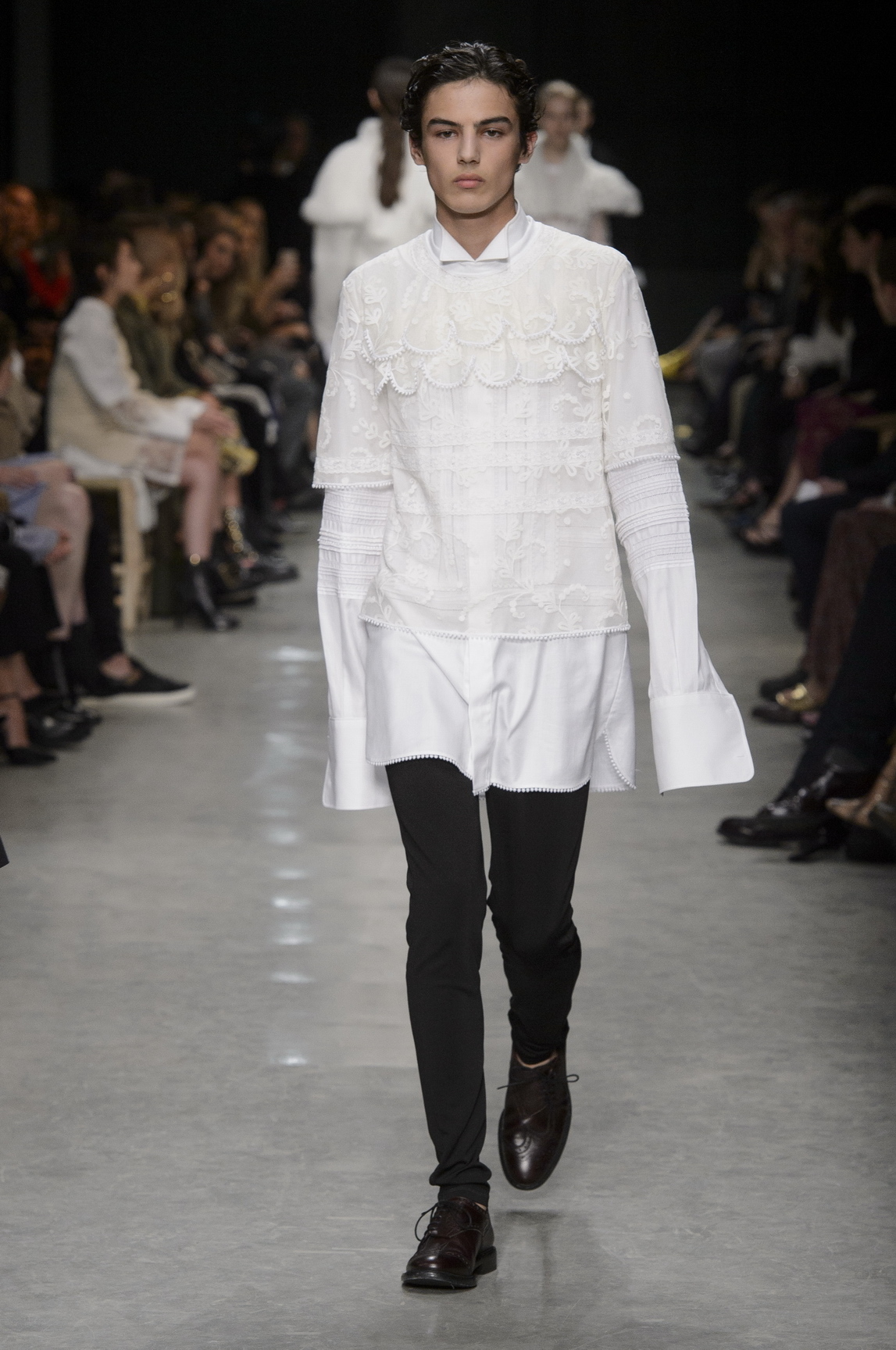
You could buy it on Burberry’s website immediately after the show, but there was nothing cold and commercial about this collection. Press and buyers had already seen it in previews weeks ago and gauped at Bailey’s intricate lacework and sculptural knitwear inspired by his childhood hero Henry Moore. What they hadn’t seen was the designer’s surprise: a majestic finale of showpiece capes added to every look, one more incredible in artisanal value than the other. It was a feast for the eye — a princely parade of pure creation, which came straight from Bailey’s heart. That finale radiated the same energy palpable this season at emerging designer shows like Matty Bovan and Michael Halpern on Saturday, or A.V. Robertson on Sunday, or Charles Jeffrey’s men’s show back in January. For all its corporate machinery, Burberry still has the power to thrill. It has little to do with retail schemes and show formats, and everything to do with the reinvigorated mind of its designer.
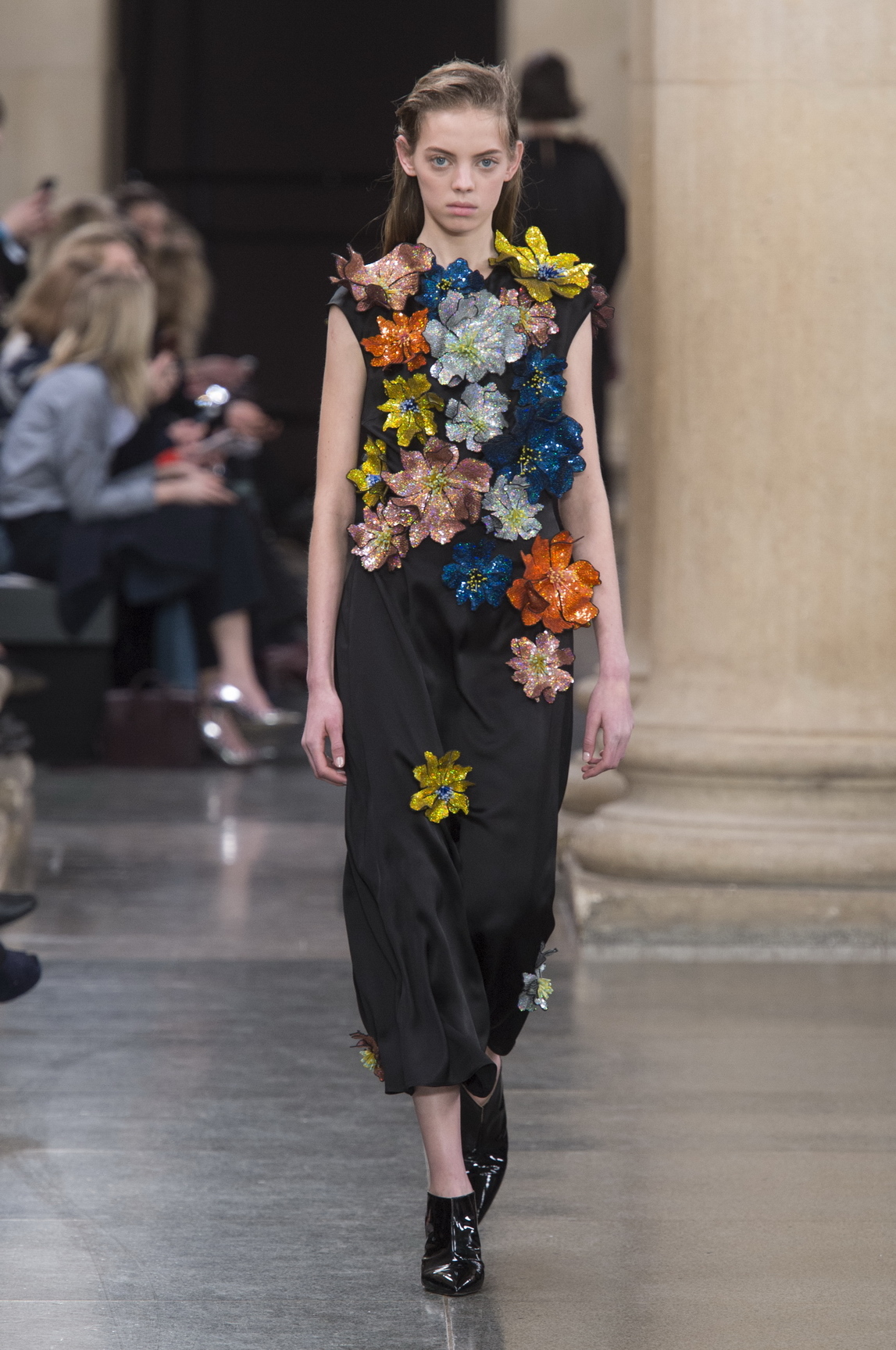
Bailey is feeling the winds of change, and they’re not all as thundery as the industry’s media outlets had us believe last year when headlines about ‘the broken fashion’ system hit us daily following the announcements of Burberry and several other brands to merge their shows and go with the straight-to-consumer format. There’s hope for the fashion romanticists yet. Just look at Christopher Kane, the experimental emerging wunderkind of London who was bought by LVMH and became part of the establishment with the commercial responsibilities it entails. If his shows in recent years have sometimes reflected that, this season was Kane back on brilliant form. His metallic, holographic collection based on female factory workers (Styrofoam stilettos in tow) couldn’t help but remind you of his exhilarating early collections. Like the work that got him where he is now, this was subversive, clever, and at times tongue-in-cheek fashion, which never felt pretentious. And in that, it completely reflected Kane’s wonderful personality.

“They were just great clothes. A great sensibility. There are lots of tonics and potions in there for sure,” he said after the show, his signature ‘dead normal’ (say it in a Scottish accent) approach to life fully intact. Case in point: the other day he took out a full-page ad in The Sun, a crazy and amazing move for a designer of his category. “I just felt like those readers of The Sun need to see an Alasdair McLellan photograph, and why not put the cheekiest one in there? People need to wake up these days,” Kane quipped. Earlier in the day, his close friend Erdem Moralioglu delved deeper into the narrative-driven design method he’s always worked from, but he’s been taking to bolder, mind-blowing heights in recent seasons. “I was thinking about my great-grandmothers, on my mother’s side from England, and on my dad’s side from Turkey near the Syrian border,” the designer, who grew up in Canada, explained. “And I was imagining what would happen if these two women met — that odd exchange.”
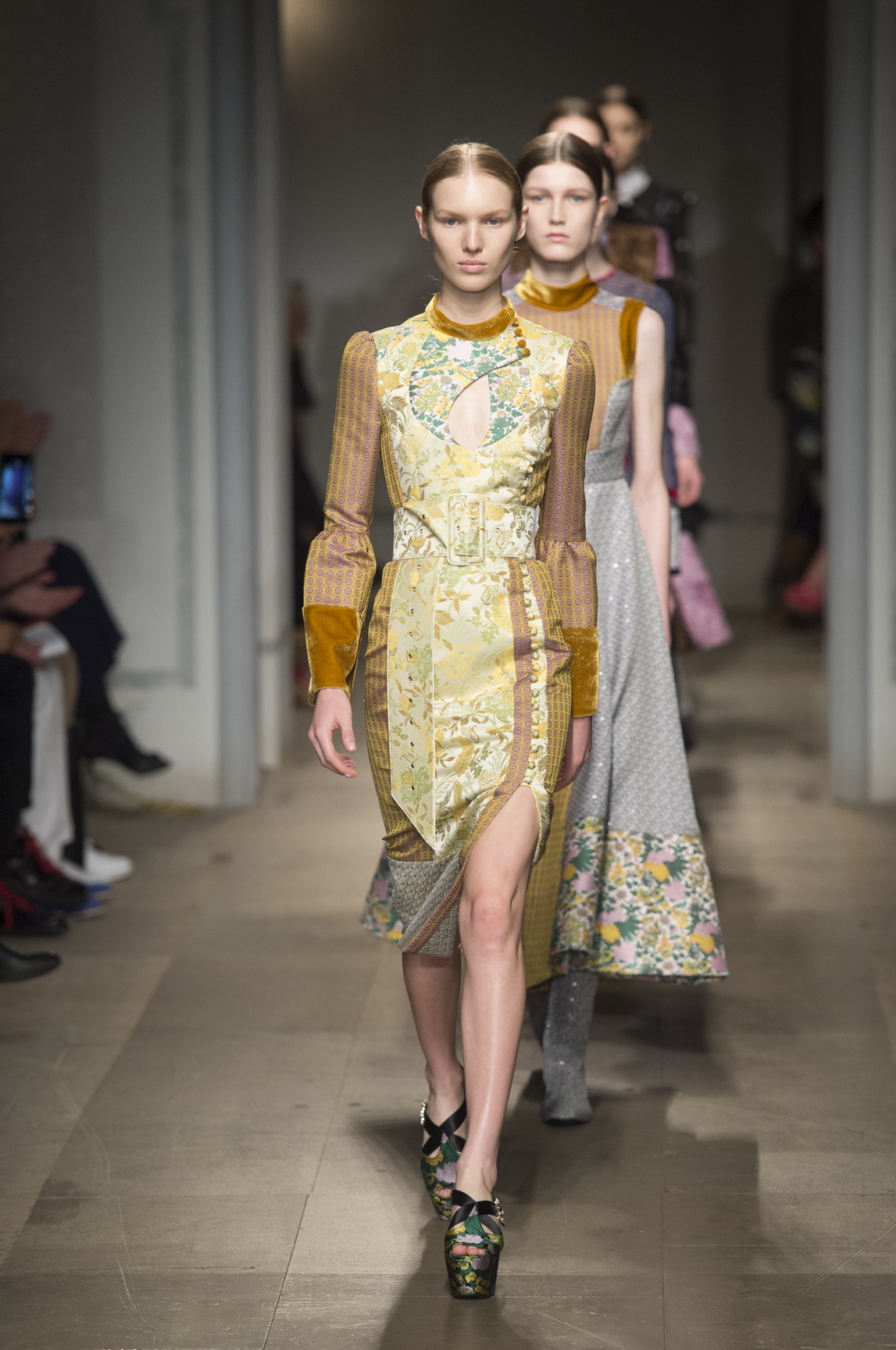
It was an immaculate conception characterized by a meeting between Persian and English elements: an Ottoman neckline with an English floral, or “the Sultan mixed with the Royal Scots,” as Erdem described the mood, nodding at his great-grandfather’s military career. Not since John Galliano — who doesn’t reveal his elaborate storylines at Maison Margiela the way he did when he was at Dior — has fashion experienced a designer with the kind of narratives Erdem works with. You might look at his collections and see romantic dresses and gowns, but the thought processes that create them are the stuff of pure, brilliant, creative imagination. Erdem’s avant-garde lives inside his head. “It was about something that I could never possibly formulate,” he said. “I don’t even know their names. It was the story of something I know nothing about.” In order for creation to feel pure, it has to have that personal feeling. And nothing could have been more personal than Roksanda Ilincic’s moving tribute to her friend Richard Nicoll, who died last year.
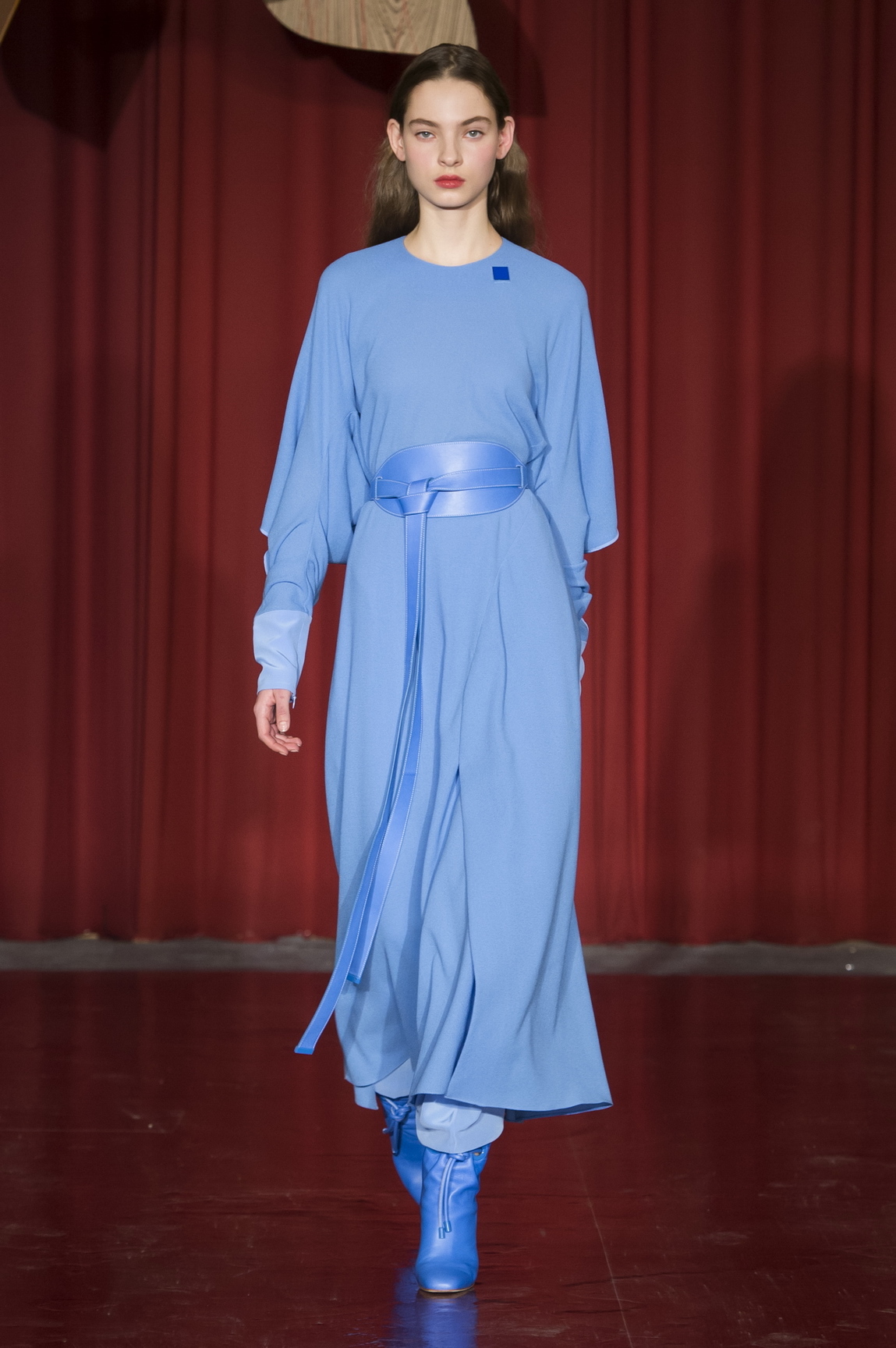
Pianist Michael Nyman played a touching piece as a lone model walked down the runway in Nicoll’s signature blue, now an official Pantone color called Nicoll Blue courtesy of his friends, who have helped the color authority mix it. It gave way to a collection of dramatic reds, perhaps a soul-baring statement on Ilincic’s part, and it felt like true love — the condition for pure creation. A fair share of fearlessness helps too, and at Joseph, Louise Trotter has plenty of it. Her collection continued down the courageous path she’s set for the brand, upping the ante in every department. Shapes were bigger, wilder. Leather and PVC joined floral prints and heavy knitwear in a crazy concoction of textures that felt totally exuberant. If the corporate wheel is spinning behind the curtain at Joseph, there’s no sign of it on Trotter’s runway. This is all vision. Slowly but surely, Fran Stringer is pushing the boundaries at Pringle of Scotland, the oldest fashion house in the world, while her references remain respectful to its Scottish legacy.
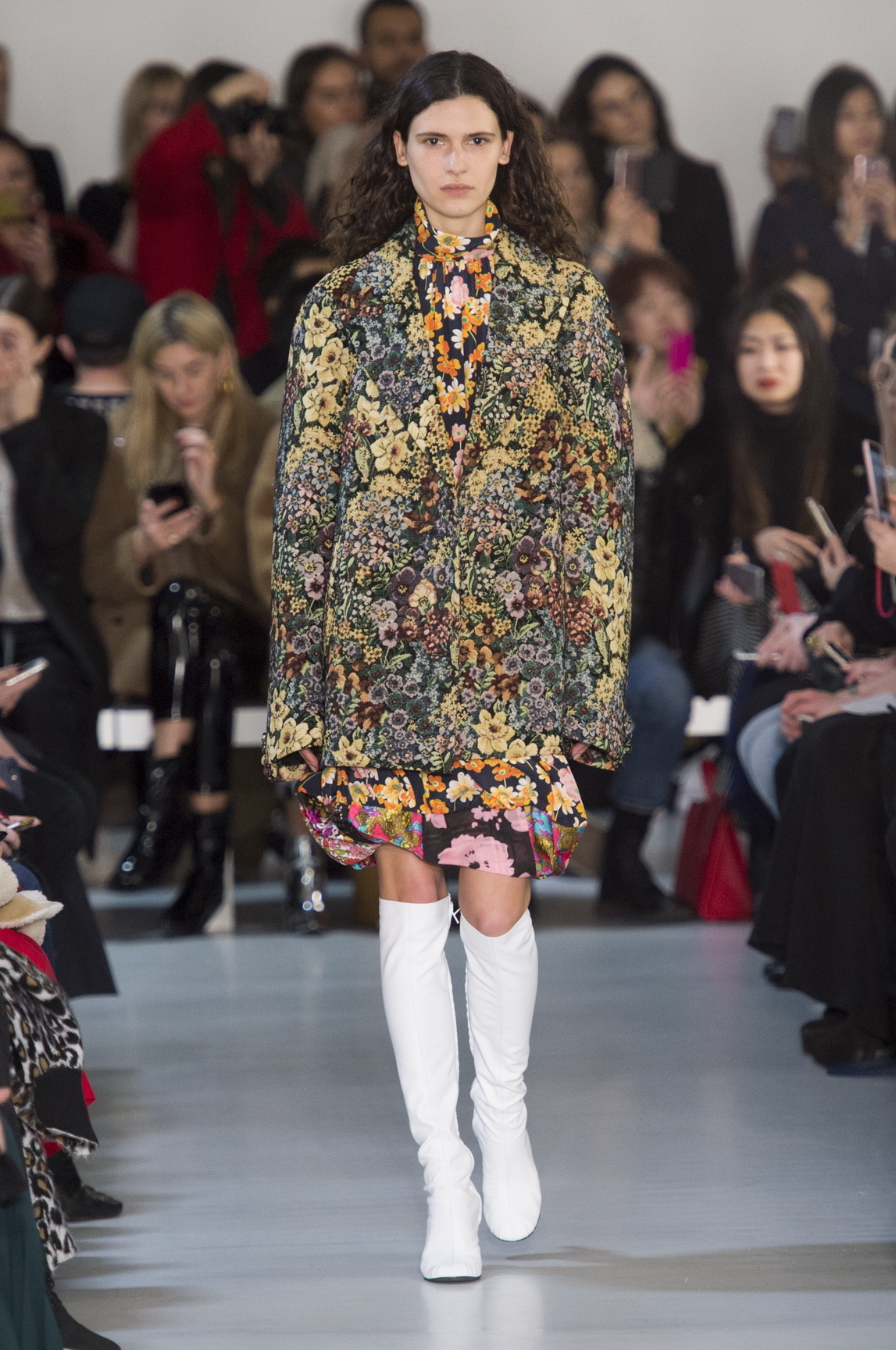
This season — her third — Stringer looked to the féileadh-mór, a traditional Scottish cloth that pre-dates the kilt in a collection she said was about “protecting oneself from the elements.” She wrapped and draped luxurious wools around the body, breaking down square shapes to the sense of ergonomic chic she’s been exercising at Pringle to perfection. But there was a new artisanal spirit in the air this season: ingeniously, Stringer patch-worked argyles from the Pringle archive into a dress and a top, which had that haute homespun sensibility about it, which very much characterizes what’s going on in London at the moment. Whether you’re an emerging designer like Matty Bovan or an established designer like Fran Stringer working for a big business, this new age of fashion isn’t about sell-sell-sell the way last year’s announcements of change foreshadowed, but a new embrace of fashion’s true core: creation, the pure way.

Credits
Text Anders Christian Madsen
Photography Mitchell Sams
